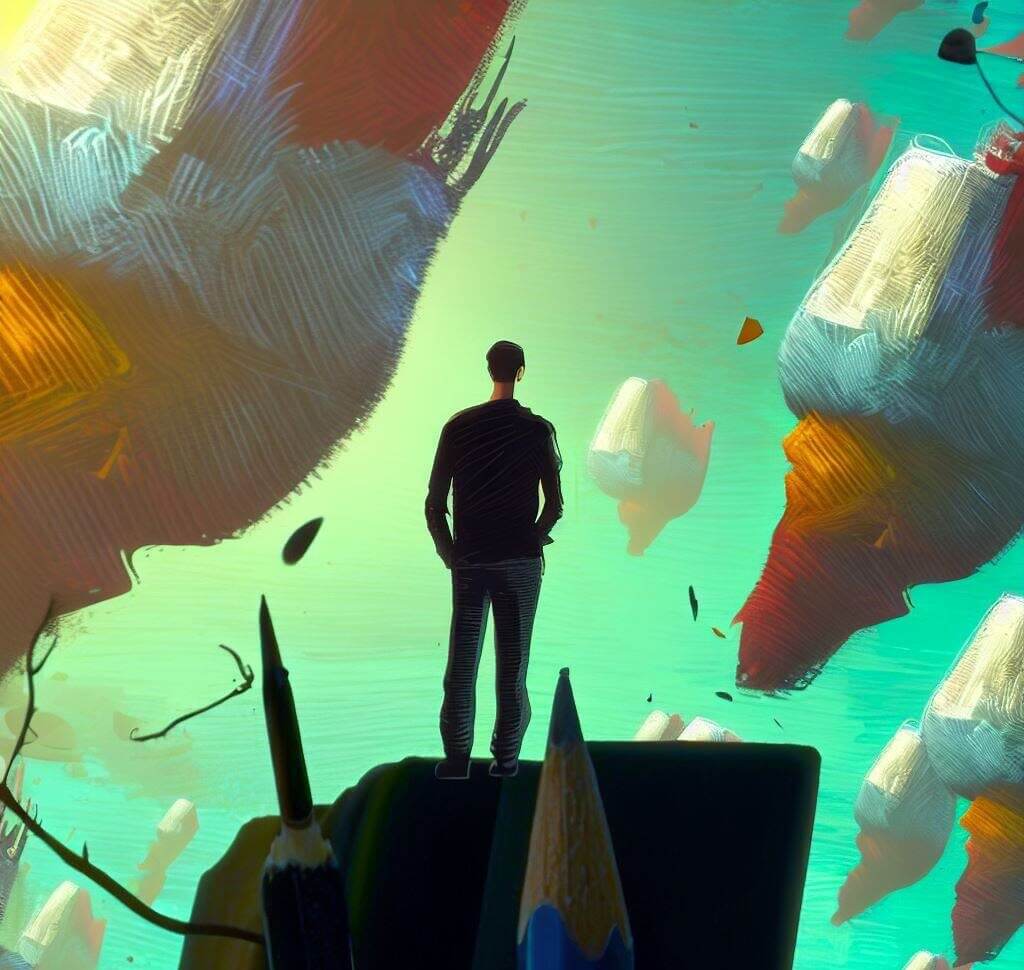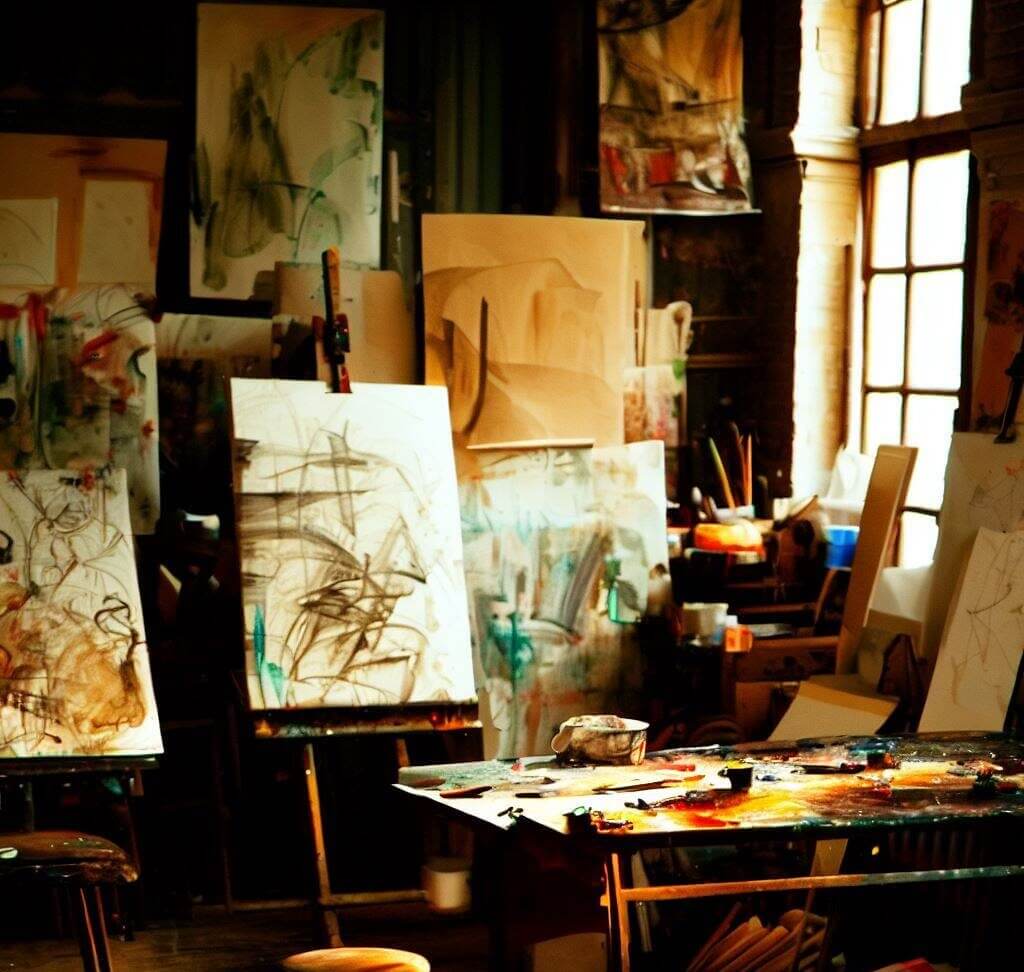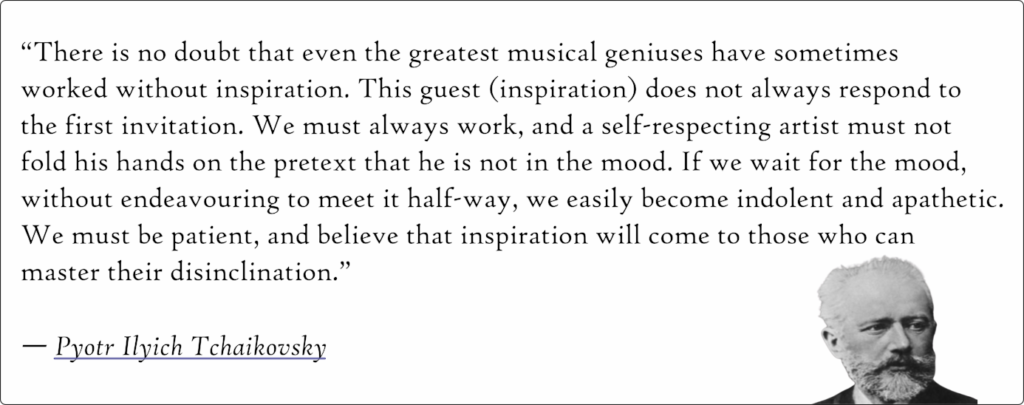
Creative motivation is like a flame that can sometimes extinguish, even in the most passionate creative geniuses. Whether you are a writer, artist, musician, or any other creative soul, it is normal to experience periods of stagnation or a lack of inspiration.
It is important to realize that these moments of motivation loss do not signify the end of your creative journey. There are 7 crucial reasons why creative motivation can be lost.
- 1. Time for growing pains
- Ways To Challenge Yourself In Your Creativity:
- 2. Your Standards Determine Your Motivation
- 3. Find Your Way Out Of Artistic Blockages
- 4. 100% Creativity = 90% Dedication
- 5. Don’t Walk Away From The Flow
- 6. Improvisation Is Key For Creative Motivation
- 7. Secretly Having The Wrong Motivation
1. Time for growing pains
When your motivation disappears, it can mean that you are on the forefront for a higher level. You have been working in a way for a longer period that has become so familiar to you that your motivation has dwindled as a result.
As an artist, you need to remain challenged in order to stay motivated. Sometimes there are moments when it is truly necessary to step out of your comfort zone.
When your creativity becomes dull…
Creativity should be anything but dull. You can notice this when you have been using the same patterns or sources of inspiration for a longer time.
When the challenge disappears, you run the risk of your creative process becoming superficial and boring. You feel like you’re going in circles and every piece of work starts to resemble each other.
The purpose of stepping out of your comfort zone is to focus your attention on something new and to grow artistically as a result.
This is not always easy. After doing the same thing for a long time, a new path will cause growing pains.
Ways To Challenge Yourself In Your Creativity:
- Change your environment

A specific work environment has a tremendous influence on your work itself. If your environment prevents you from focusing on your work, you will also be more prone to giving in to distractions. An art studio or study room already ensures that you unconsciously prevent yourself from being distracted.
- Give yourself permission to be inspired by others
The fear of not being original can make you reluctant to adopt ideas from others. By doing this, however, you will notice that you are allowing yourself to learn from others and transform it into something original.
- Explore new techniques
If you find your own work superficial, it may be because you are stuck in a pattern of using the same means. Learning new techniques and approaches opens the door to new possibilities and inspiration. Be open to learning new things through videos or by reading a good book about the art form you want to strengthen yourself in. Nowadays, you can find instructional videos on YouTube about almost anything.
- Combine two extremes
By juxtaposing two complete extremes, you can work with contrasts. This combination brings about a new perspective and a greater tension. When we think of extremes, we often only consider ‘good and evil.’ However, combinations of dark and light colors, two different characters, or contrast in techniques can also challenge you to see new things.
- Choose new sources of inspiration
The best art is that which has brought about a significant or small change. Works that provide a completely new perspective or introduce a new style are often seen as genius. The great artists who made breakthroughs have taught themselves to take new paths and embrace change.
Therefore, it is good to consider which unknown sources you can use for inspiration. Look at new art, visit museums, or discover which influential individuals you find interesting enough to delve further into.
2. Your Standards Determine Your Motivation
There is nothing wrong with striving to surpass yourself. This should happen automatically if all goes well. After all, in each creative process, you learn new things that you incorporate into your subsequent work. It is good to ask yourself then: How much of a perfectionist am I really? You may think you are not, while your expectations are still quite high.
Of course, nothing is impossible in your creativity. You can create anything you want in the way you prefer. The major problem often lies in this:
Everything you create and conceive is already rejected beforehand because you unconsciously compare it to the quality and recognition of other people’s work.
The comparison with others and their work is the biggest killer of your motivation. Not only in the creative realm but in any other aspect of life as well.
However, comparing can also be a useful tool if your goal is to inspire yourself through others and learn from them.
The line between the two is thin, and people are more inclined to lean towards the wrong side. Remember that the only person you should surpass is not others but yourself.
3. Find Your Way Out Of Artistic Blockages
A creative block can also lead to a dip in your motivation.
“The biggest reason for an artistic block is having high expectations of yourself and others.”
Inspiration is a fascinating thing because you can never predict exactly when it will come to you. Often, you miss that spark and become discouraged because nothing substantial is coming out of you. Without this spark, your creative process becomes sluggish and feels exhausting, making you more likely to give up and not attach any value to it.
The trick is to understand how inspiration works and that it only makes up 10% of your entire creative process.
Many groundbreaking artists such as Claude Monet and Gustav Klimt have experienced their struggles with artistic block. The feeling of being uninspired often leads many people to quit and lose their creative motivation. This is a shame because there are ways to ignite your inspiration.
Overcome your artistic block today
4. 100% Creativity = 90% Dedication
When inspiration flows like water and you are overflowing with ideas, those are the best times for any artist. Often, you will discover that inspiration is not as easy to stimulate, thus affecting your motivation. One week, your creative mind seems to go wild, and the next week, not a single good idea seems to come from within you.
This can be very discouraging and leave you with the feeling that you are not good enough because your lack of ideas.
This quote from the great composer Tchaikovsky perfectly captures how to best understand inspiration:

Feeling uninspired is terrible for any artist. Your artistic engine feels turned off, and it seems pointless to start anything. At least, that’s how it feels.
By simply starting and pushing yourself to do it, you force yourself to get into the flow. Know that anything and everything can be used as inspiration.
By convincing yourself that inspiration can only come from one direction, you are actually working with blinders on. It is the spontaneity of inspiration that leads to those sudden insights.
5. Don’t Walk Away From The Flow
But then there’s that feeling when you’re overflowing with new ideas and you have a crystal-clear vision in your mind of what you want to create. Yet you don’t execute it. You postpone it by having a cup of coffee, tidying up, or getting busy with something else…
“It feels liberating not to have to face the disappointment of not liking what’s in your head once it’s brought to life.”
It is the task of every creative individual to grow beyond this. It’s incredibly frustrating to work on the ideas in your head and end up with a different outcome.
This happens because you heavily rely on inspiration alone. You enjoy all the insights and ideas you receive, but bringing them to fruition is a challenging task that requires a lot of effort.
To avoid feeling this pressure, you distract yourself by doing something else.
Motivation will be there when you want to start but diminish as it gets harder. Train yourself to remain disciplined and not get distracted. Creating significant things takes effort and discipline.
- Research shows that when individuals fully immerse themselves in a activity and lose track of time, they experience a higher level of motivation and satisfaction. Cultivating flow can be achieved by finding the right balance between skills and challenges.
6. Improvisation Is Key For Creative Motivation
Another important key to finding your motivation is to respond spontaneously and unprepared in the moment, without predetermined plans or structures. You don’t have to put much effort into finding a good idea. You let it happen to you. The beauty of it is that you can practice this in any form of art.
Improvisation has a random factor, which allows you to come up with the most spontaneous ideas without any preparation. The point is to just start and not worry about what will happen. Let go of that control.
“Improvisation is like a conversation. You listen, you respond, and you contribute something meaningful to the dialogue.”
Improvisation can also be thrilling because you’re creatively present in the moment without preparation. The result is that, without control or training, you can come up with the most marvelous ideas.
7. Secretly Having The Wrong Motivation
Having the intention to create something for expressive self-development is a good foundation. Having the wrong motivation for engaging in creative activities is a mindset that will discourage you in the long run and make you lose your motivation. If one of these reasons becomes the primary demand for your creativity, there’s a high chance you will experience perfectionism or fear of rejection:
- Wanting to become famous
- Wanting to be better than others
- Because it’s expected by others
- Meeting the expectations of others
- Fear of rejection
The best reason for creative expression is being able to channel your inspiration and emotions into a story, music, or artwork and find satisfaction in it.
That’s it, as long as you keep enjoying what you create and don’t need validation from others because you’re in the creative field. The motivation to be creative won’t always be present. Therefore, you are also allowed to take a break or have the opportunity to create work that doesn’t immediately meet your artistic standards.
Even through “bad art,” you will grow and unconsciously explore new territories.
It’s actually good to do what you don’t want to do in order to get where you want to be.
Challenge yourself and ensure you have enough sources of inspiration to stimulate yourself. A good dose of discipline and perseverance will ensure that your creativity continues to grow despite the difficult times.
Combination Of Factors
As a creative individual, you will sometimes experience slumps. You can’t always be “on.” It is up to you to choose whether to take a break or to persist under all circumstances.
Various psychological studies have explored the complexity of creativity and demonstrated that external factors such as deadlines and sources of inspiration, as well as internal factors such as emotions and substances like dopamine, influence creative motivation.
According to researchers, the loss of creative motivation can be attributed to both personal and external factors, such as stress, perfectionism, fear of failure, lack of positive feedback, and a lack of challenges.
Conclusion
The loss of creative motivation can feel very hopeless, as if you have no control over it. By challenging yourself and understanding your expectations well, you can return to a state of creative motivation and productivity.
Remember that creativity is a journey, and it is normal to encounter obstacles from time to time. Stay true to your passion and let your creative expression shine.
